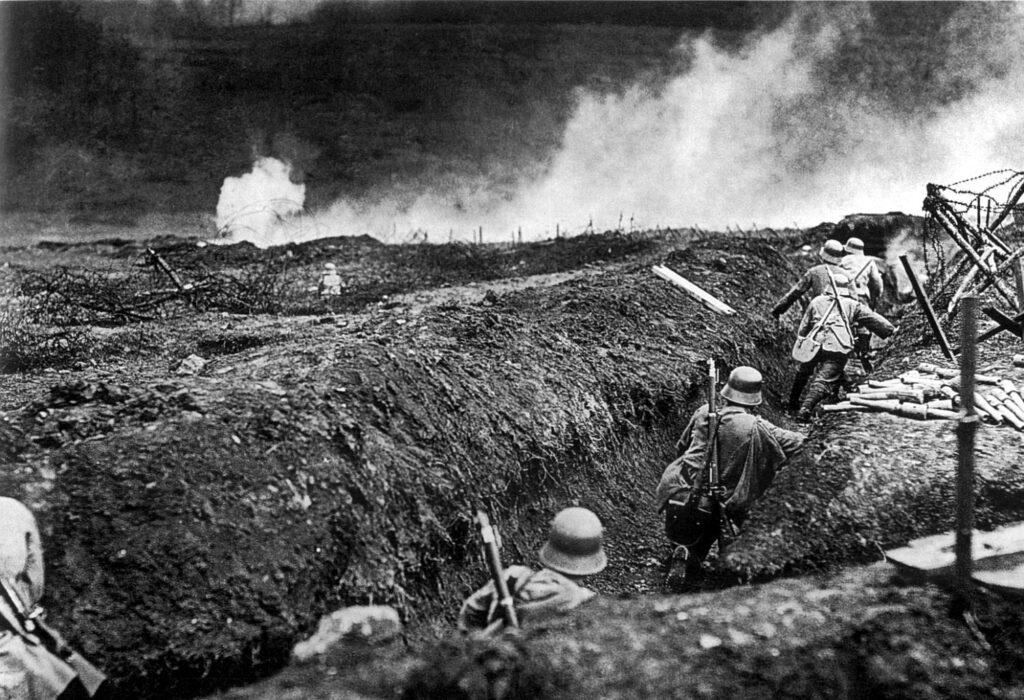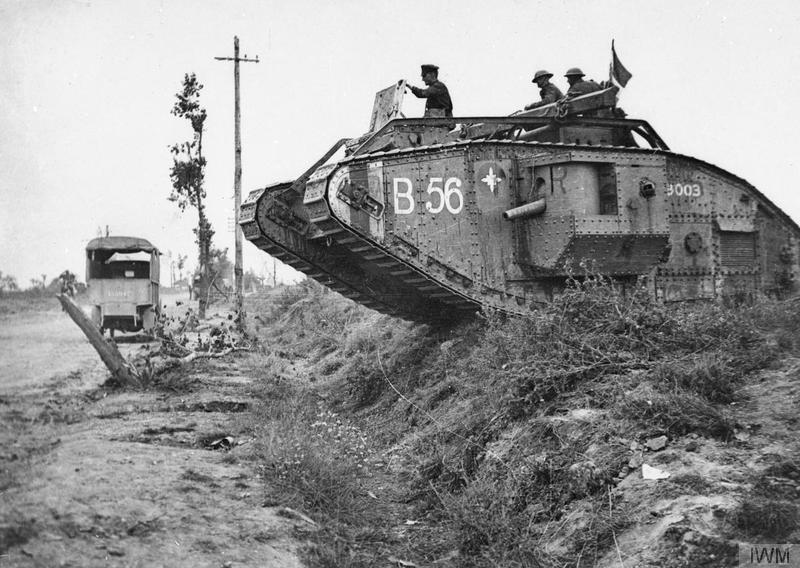Introduction
Have you ever had a project that was fraught with problems, which seemed impossible to solve? But you persevered and eventually you learned expensive lessons?
You were then able to finish the project with a flourish.
But after the joy of success faded you were still haunted by the problems and the mistakes?
This was the experience of the British army during the interwar years. (1918 -1939)
World War One
In 1914, Britain entered its first European war for over half a century with the only fully professional army of all the protagonists. But this was a war it was ill prepared to fight. The role of Britian’s army was to police the Empire and enforce the Pax Britanica.
However, it found itself facing a first-class European adversary and was forced on to the defensive. Along with its French ally it stopped the German juggernaut on the Marne, and the war settled down to a static slogging match.
Four years of carnage followed millions were killed and maimed in the mud and blood of Flanders. Each attempt to break the stalemate resulted in thousands of casualties, for almost no gain in territory.
Then came the German 1918 spring offensive, Kaiserschlacht, led by their Strumtruppen (Stormtroopers). With their new infiltration tactics, they penetrated deep into the Allied lines. However, defense in depth prevented a complete breakthrough and after four months the offensive ran out of steam. Having suffered high casualties in its elite units the German army could only fall back on the defensive and await the inevitable allied response.
The Final Hundred Days
The Allied response came on the August 8th with the Australian, Canadian, American, and British attack at the Battle of Amiens. Called by Erich Ludendorff the black day of the German Army. They recovered all the gains of the German spring offensive, forcing the German army to fall back to the prepared defenses of the Hindenburg Line. In a series of attacks the Allies breached the Hindenburg line penetrating deeply into the German rear area.
To prevent a total collapse Germany sought an armistice, signed in a railway carriage near Compiègne, on the 11th of November 1918.
The “War to End all Wars,” ended on the 11th hour of the 11th day of the 11th month.
What had changed?
When the war opened in August 1914 it was one of maneuver, but the carnage of modern weapons forced the protagonist to entrench. Each side tried to outflank the other in what became known as the race to the sea. The result was a line of opposing trenches from the North Sea to the Swiss border.
For the next two years the protagonist engaged in a series of bloody assaults to break the deadlock.
Massive artillery barrages, mines, waves of infantry, nothing seemed to work.
The British assault on the first day of the Somme offensive was the blackest day in the history of the British army. Despite a week of preparatory bombardment where the guns fired over a million shells, the wire was not cut, and the volunteer battalions of the new army were cut down in their thousands as they advanced into a hail of machine gun fire.
There were over 57,000 casualties, 19,000 dead, on the first day.
The losses were more devastating because the assault troops contained a high proportion of “Pals Battalions.” These comprised men from the same village, or factory who signed up to serve together when the call for volunteers went out. This meant that whole areas lost a major proportion of their young men in a single day.
The Somme battle became the poster child for the incompetence of the Chateau generals.
However, the commanding generals were slowly learning and by 1917 small successes were achieved.
Britain’s introduction of the tank resulted in local successes, with reduced casualties.
Germany developed the Strumtruppen, and devoted significant effort into training these elite units.

As can be seen from the picture the main weapon was no longer the rifle, which was slung, but the sandbags filled with grenades for clearing the trenches, and the shovel for digging in to resist any counter attack. (Note the pile of “potato masher” grenades on the side of the trench).
Stormtroop battalions1 could also have as many as 24 machine guns, 8 mortars, and 8 flamethrowers.
The Stormtrooper battalions proved very effective during the spring offensive, but they were tactical units and the German offensive lacked and overall strategic cohesion.
They ultimately failed when faced by the more strategically focused allied defence in depth.
Having withstood the onslaught the allies struck back in a series of engagements known as the hundred days, which owed much to the attention to detal and brilliance of Australian General Monash.
Spearheaded by the Australian Corps the Allied forces counterattacked.
The offensive was not limited to the tactical but was a brilliant, combined operation.

British artillery had learned from the problems of 1916.
- Better shells were available.
- Used appropriatly.
- Bombardment was limited to a short duration then followed by a creeping barrage.
- Acoustic location of enemy batteries allowed preregistration of guns for counter battery fire
- Accurate arial reconnisance also allowed the guns to be preregister on key targets, supply dumps, key crossroads, reserve positions etc.
- Improved communication allowed better coordination with infantry and Armour.
Tanks were deployed in large numbers with close infantry support to overwhelm enemy resistance.
Infantry now operated in a similar way to the stormtrooper.
- Used fire and movement – no more shoulder-to-shoulder marches across no-man’s land.
- They were not overburdened with equipment. (Just food water and ammunition)
- The assult infantry bypassed strong points, moving on to their primary objectives, and leaving them to the follow-up infantry, or artillery.
The Airforce was used in close support.
- Reconnaissance and communication.
- Bombing and straffing.
- Maintaining air superiority over the battlefield.
Combat engineers.
- Cleared obstacles.
- Repaired roads and bridges.
- Ran communication wire.
This system was supported by meticulous preparation and training. All units were briefed in detail and understood their role and objectives.
All based on reliable intelligence.
After four years of bloody carnage and hard lessons, a superb British Empire Army was part of the Allied forces that overwhelmed the Germans, forcing them to seek an armistic in just a hundred days.
The British generals, had made many mistakes but they developed a war winning strategy, and honed the army to peak of efficiency.
Note: French and American armies also played a major part of the hundred-day offensive, but this post focuses on the role of Britain between 1914 and 1940.
What were the lessons learned?
Given such a spectacular turnaround, there must have been many beneficial lessons learned, but that will have to wait until Part 2.
I was working on this blog post, and it had already reached 2500 word, with still a “ways to go”, so I decided to split it into two smaller posts.
Come back next week for the conclusion of “Are your retrospectives retrospective?
NOTES
1A German line battalion comprised around 800 men, where as a Stormtrooper battalion complement could be as high as 1400, with more heavy weapons.
BIBLIOGRAPHY
- Victory to Defeat: The British Army 1918-40 – Richard Dannatt, Robert Lyman.
- Monash: The Outsider Who Won a War – Roland Perry, David Tredinnick.
- World War I Trench Warfare – Dr. Stephen Bull, Adam Hook.
- Germans Stormtrooper 1914–1918 – Ian Drury, Gerry Embleton.
- An Illustrated History of The First World War – John Keegan.
- The Pity of War – Niall Ferguson
- The Bomber Mafia – Malcolm Gladwell
- Achtung Panzer – Heinz Guderian
